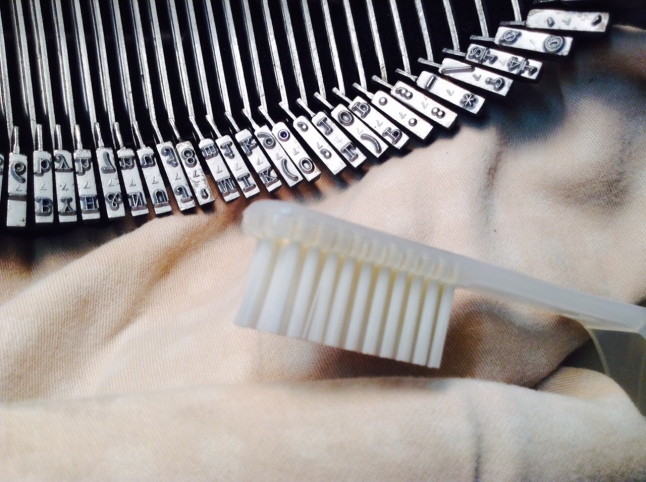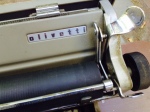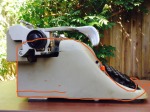It is Labor Day holiday here in the US, and I labored happily over my typewriters. I tinkered with the Fox No. 24, got stuck and decided to wash my collection of typewriter rags while I thought through the problem.
I then read Richard Polt’s very interesting post on his Adler Universal that shows the ease with which the carriage is removed – and that jogged my memory. I needed to take my Lexikon 80 apart and fix the drawband.
The drawband on my Olivetti Lexikon 80 had slipped off recently while I was moving it. I had replaced the drawband with fishing line not too long ago after it broke, and I worried that the slippery fishing line might slide off the mainspring drum at some point since the drum had no lip to hold the draw string on. Well, it did just that when I was moving it inside after the block party.
I decided to try my luck with shoelace since it would be a bit closer to the original draw strap material. I bought some flat black shoelaces at the grocery – $1.79.
I cut a piece of shoelace about 17 inches long – which is about the length of the original draw band:
I had held onto the Lexikon 80’s two original drawstrap hooks for sentimental reasons. I found them and pried their little jaws open – these secured the old drawstrap.
I made sure that the sharp triangular teeth were poking up – these grab the draw band. I inserted my shoelace and tapped the hooked retainer closed. I repeated this on the other end of my shoelace draw band.
I then removed the cover and carriage from the Lexikon 80 – see Rob Bowker’s great tutorial – and pulled off the old detached draw string. Using a bamboo skewer (I will always be indebted to Robert Messenger for his documentation and use of the bamboo skewer in drawband replacement) and fed the shoelace through to the mainspring.
Here is my shoelace hooked on the right side of the carriage:
And here is the shoelace hooked onto the mainspring drum (I wound the mainspring about 3.5 rotations before attaching the draw strap:
Super classy! We’ll see if it holds up and doesn’t slip off.
While I was replacing the drawband, I reflected on the typewriter drawbands that I have known:
- Remington Rand KMC
- Oliver No. 9
- Corona Four
- Royal KHM
- Royal Aristocrat
- Olivetti Lexikon 80
- Fox No. 24
- 80lb line – overkill
I like junkier typewriters, so many of my typewriters have had drawband problems.
- Remington Rand KMC – my first…
- Oliver No. 9 – drawstring replacement and drawstring hook fabrication
- Corona Four – drawstring re-attachment
- Royal KHM – re-attachment of original drawband
- Royal Aristocrat – drawstring replacement with fishing line
- Olivetti Lexikon 80 – initial replacement with fishing line
- Fox No. 24 – again with the fishing line
The Lexikon 80 is happy to be functional again – the new shoelace drawband is very handsome. I had hoped to make more progress on my Fox 24, but overall it was a pleasant holiday spent tinkering with typewriters.































































